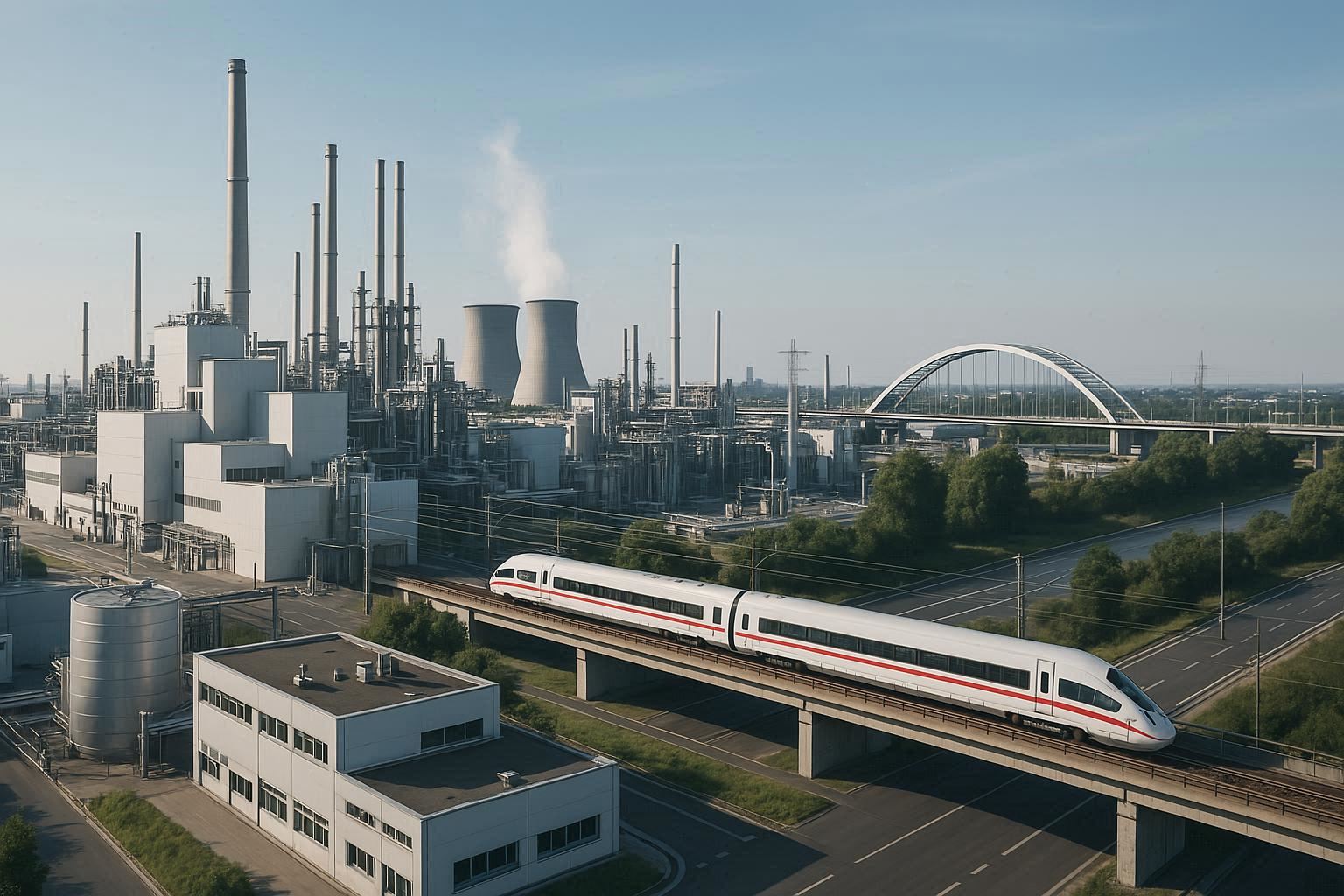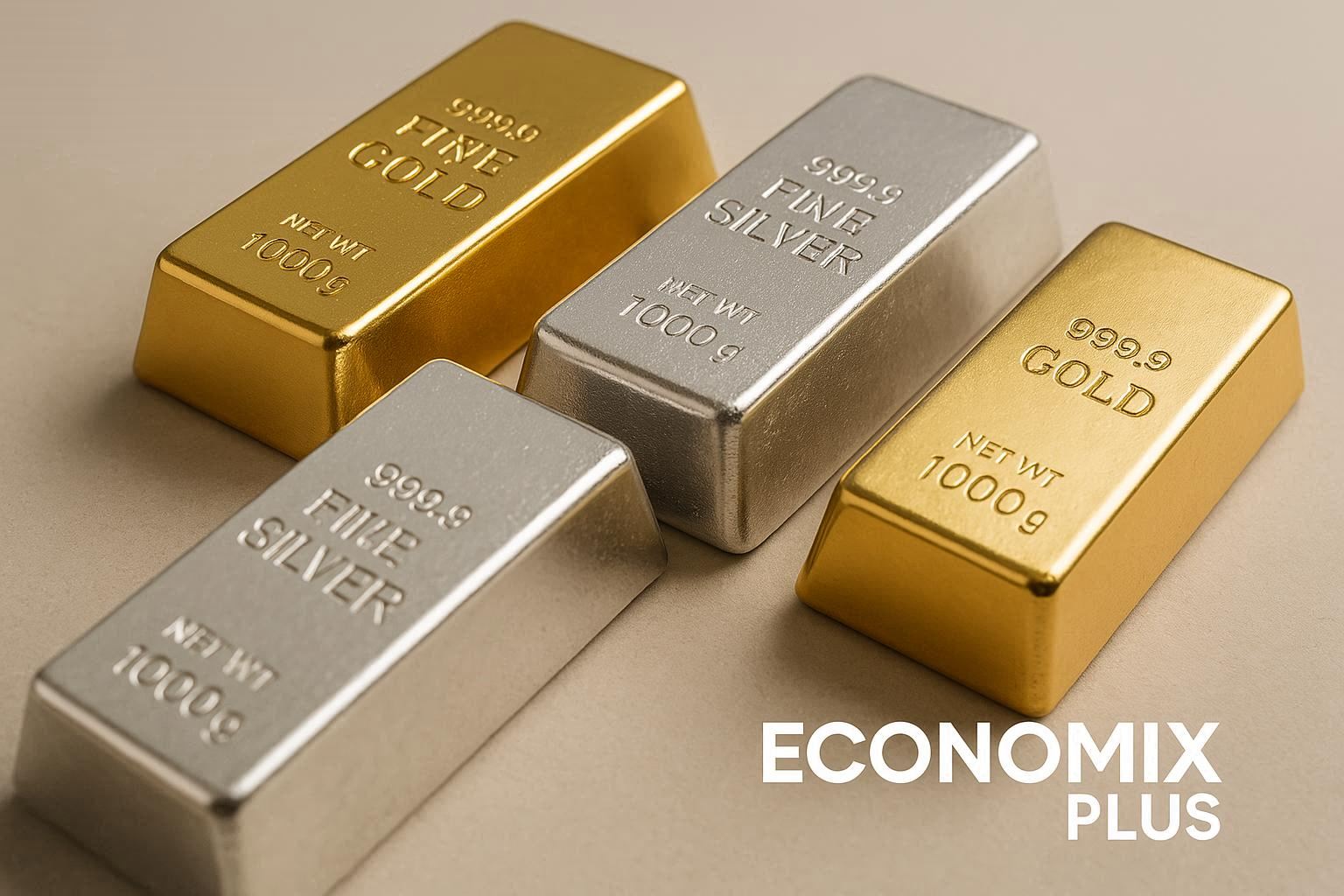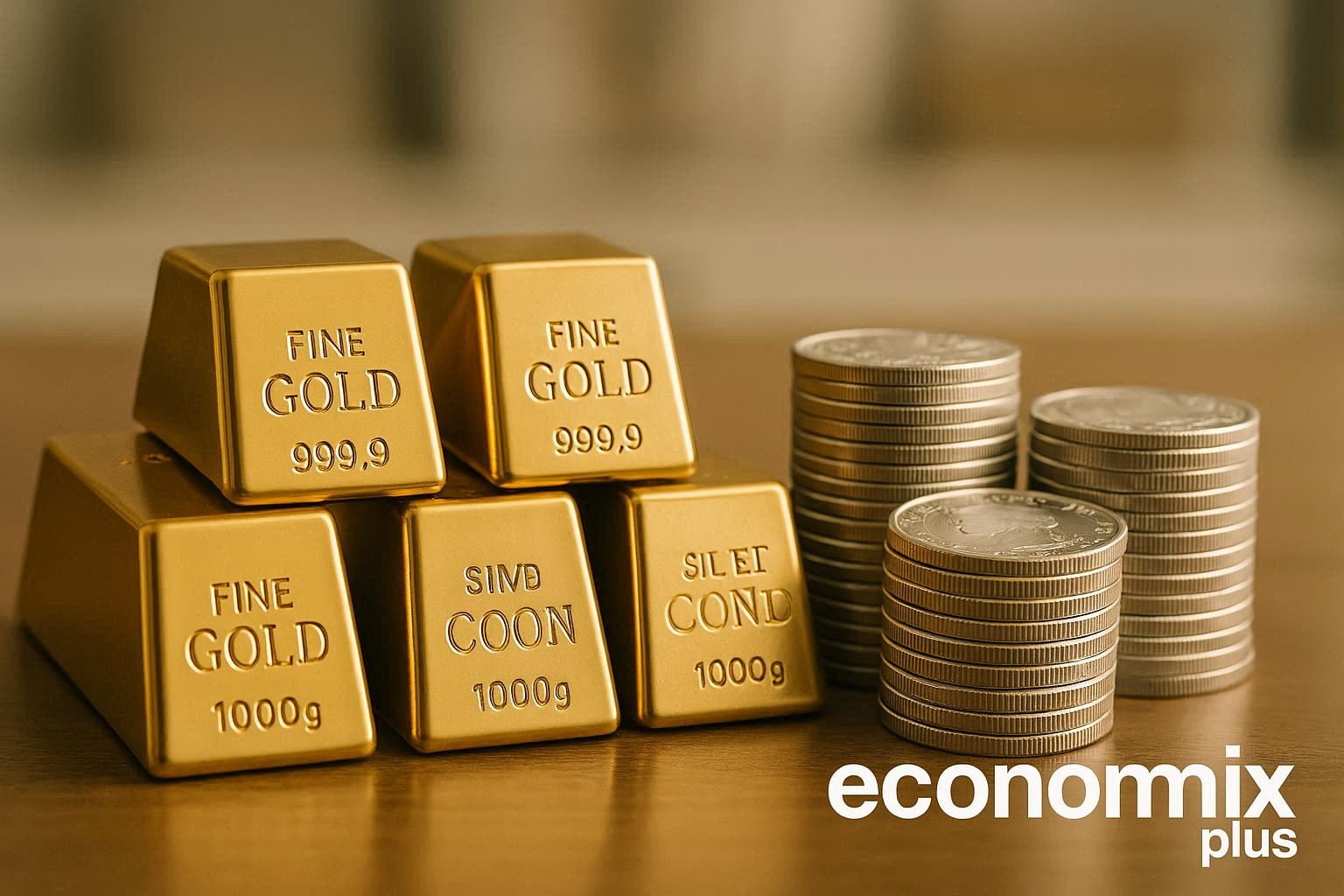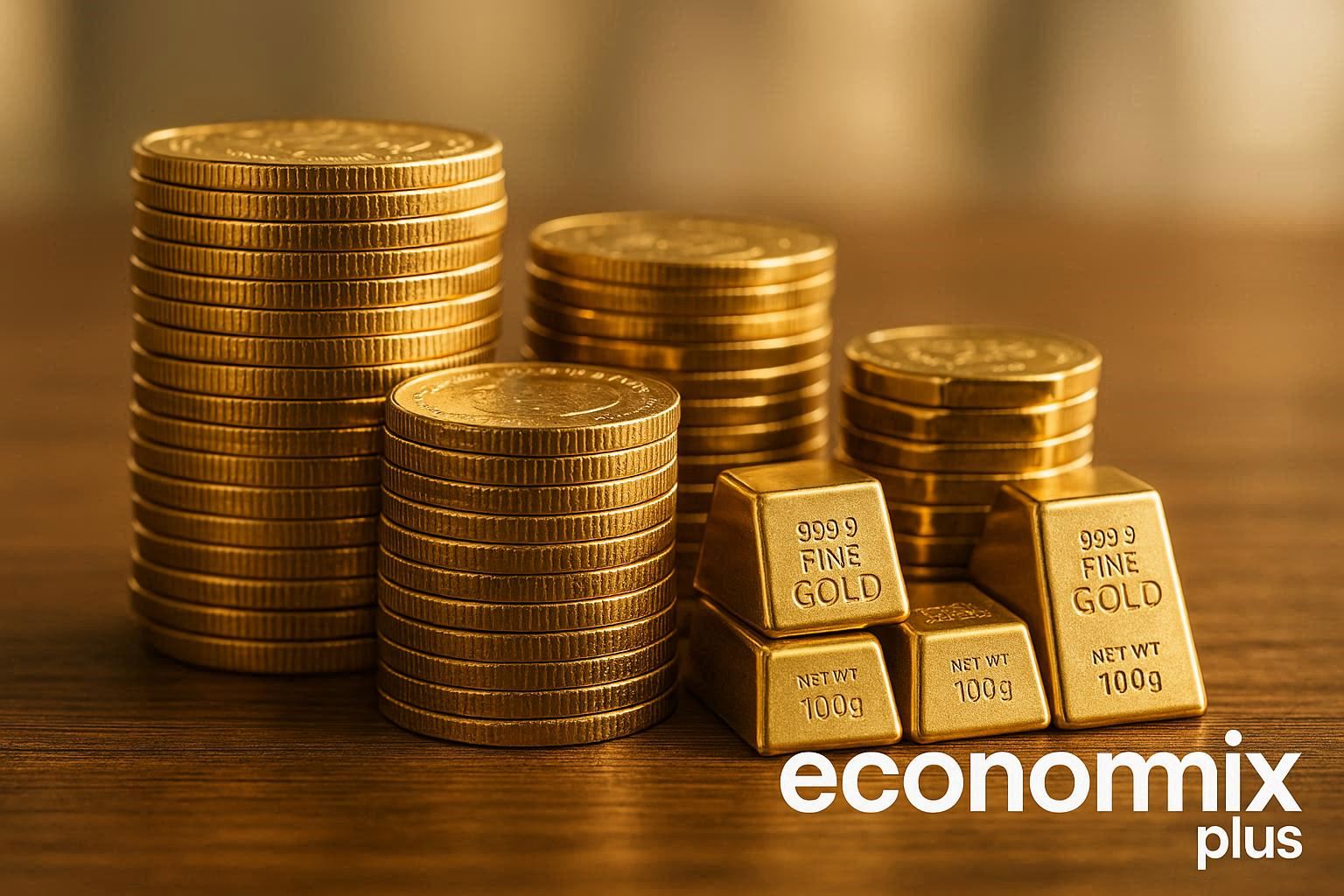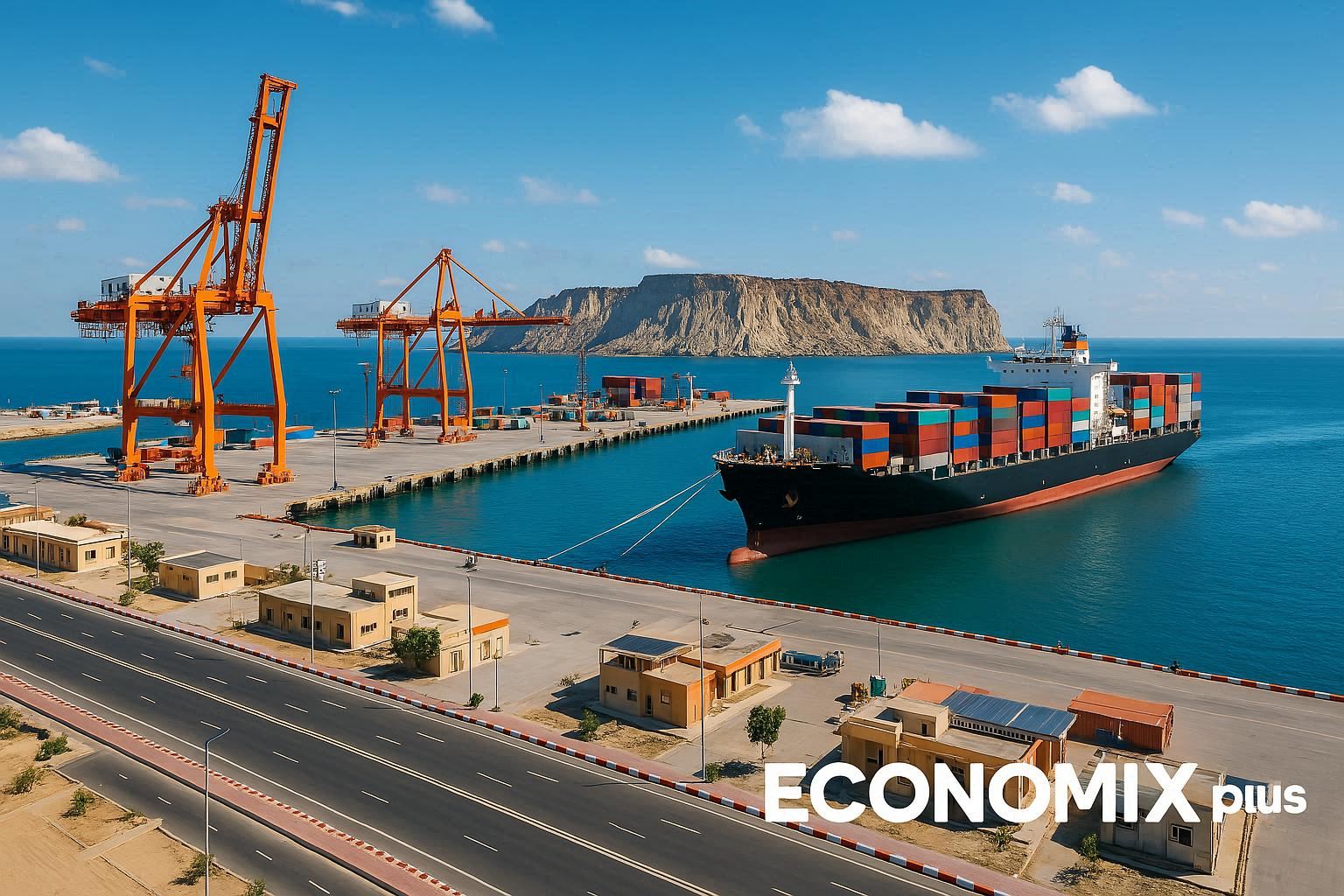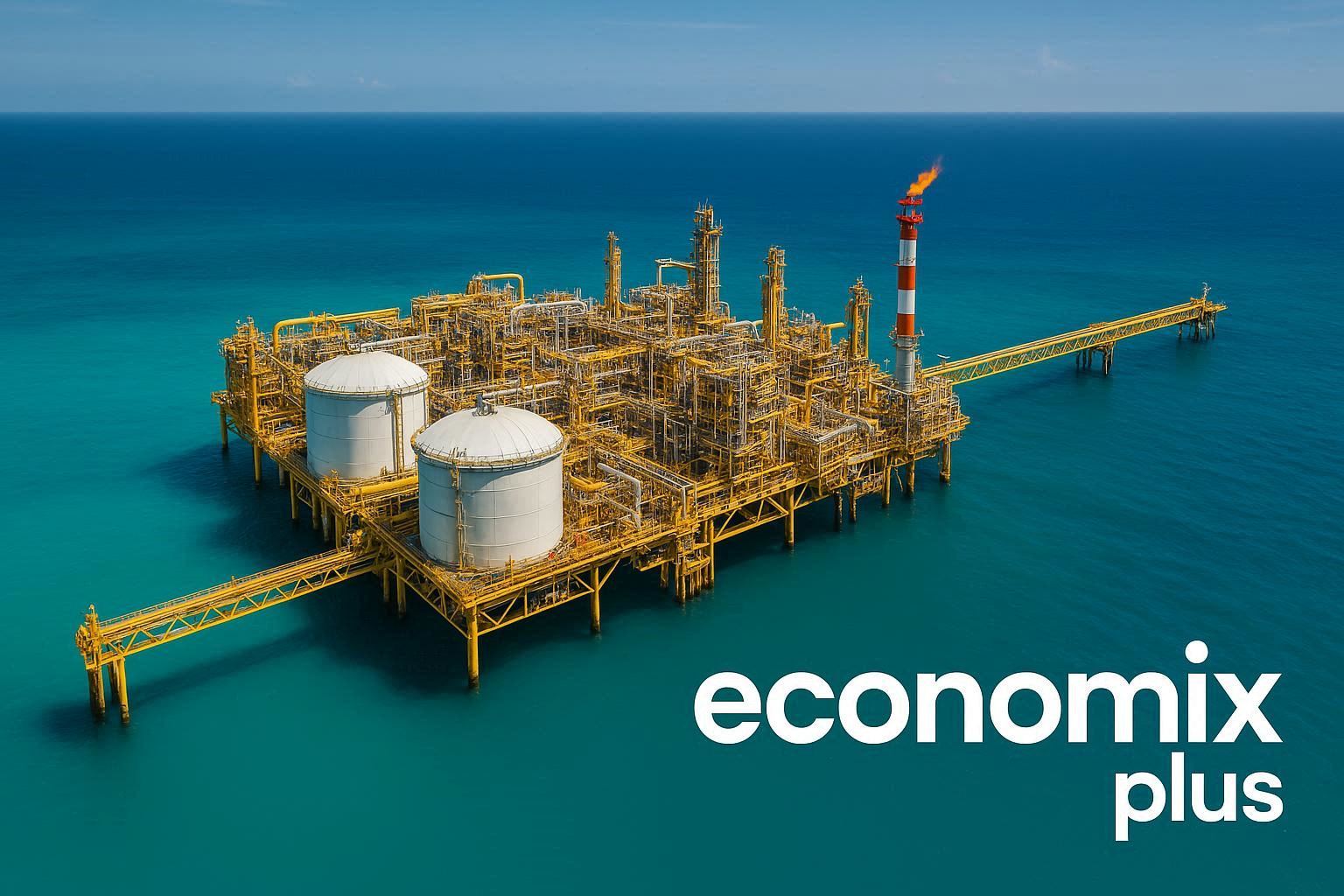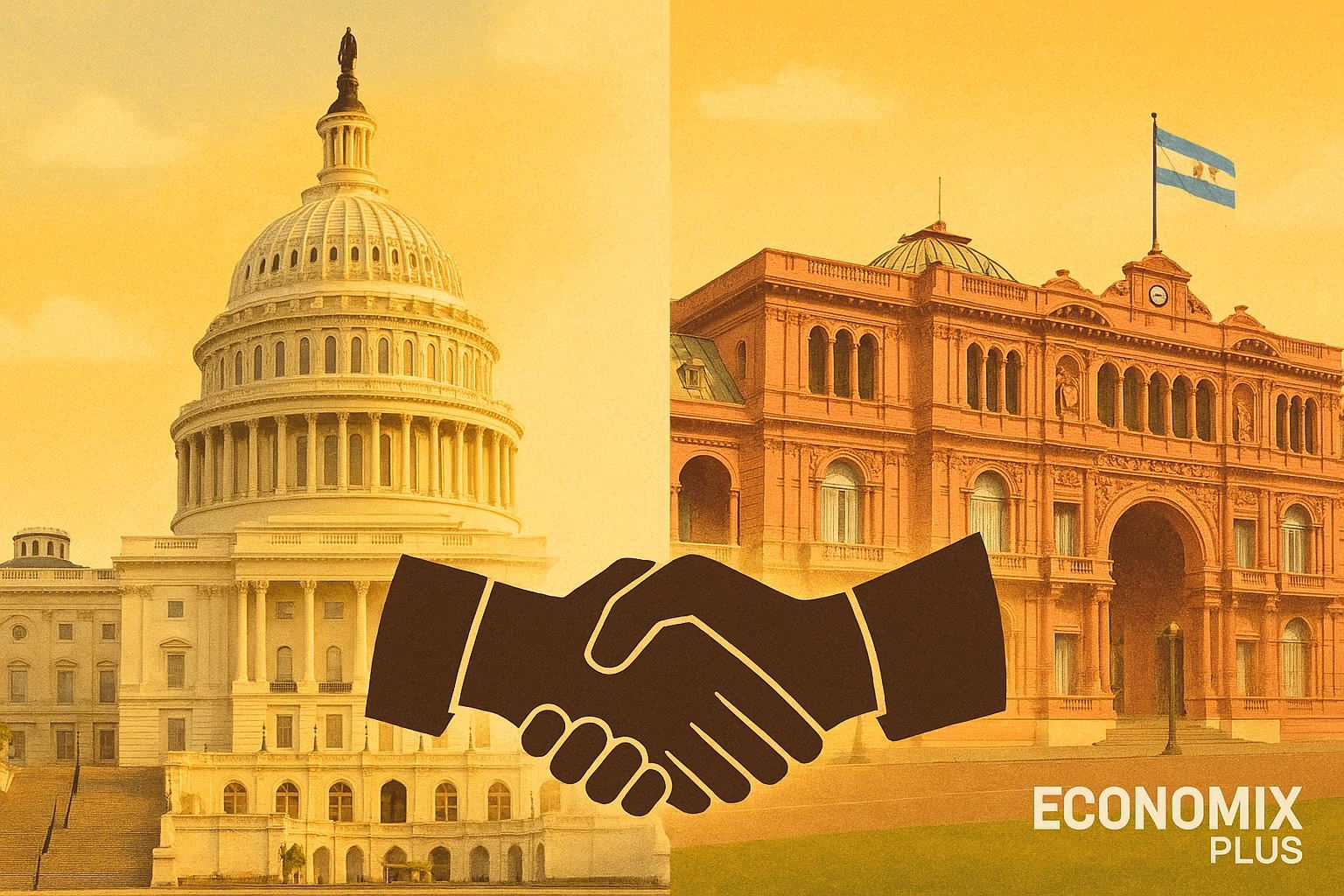You might wonder how a nation’s money stays strong when its main income source swings wildly. For decades, one Middle Eastern economy has defied expectations, maintaining a rock-solid exchange rate even as global energy markets shift. The answer lies not just in black gold but in strategic choices that balance old and new.
This country’s financial guardians built massive safety nets. By stockpiling reserves during boom years, they created buffers against crude oil’s unpredictable cycles. Recent IMF studies show these efforts aren’t just temporary fixes—they’re part of a long-term vision blending traditional wealth with modern fiscal discipline.
Modern policies here don’t just react to market chaos. They anticipate it. Through careful planning, officials insulate the local currency from short-term shocks while diversifying revenue streams. You’ll discover how historical decisions continue to shape today’s economic landscape, proving stability isn’t about luck but layered preparation.
Key Takeaways
- Strategic reserve management acts as a financial shock absorber during market turbulence.
- Fiscal policies balance immediate needs with long-term economic vision.
- Historical data reveals patterns in weathering crude oil price swings.
- International reports validate proactive stabilization methods.
- Economic diversification complements traditional resource reliance.
Saudi Economic Landscape and Currency Stability
Building a robust economy isn’t accidental but a result of deliberate policies. Over seven decades, strategic choices transformed a resource-dependent nation into a diversified powerhouse. Let’s explore how history and modern governance shaped this journey.
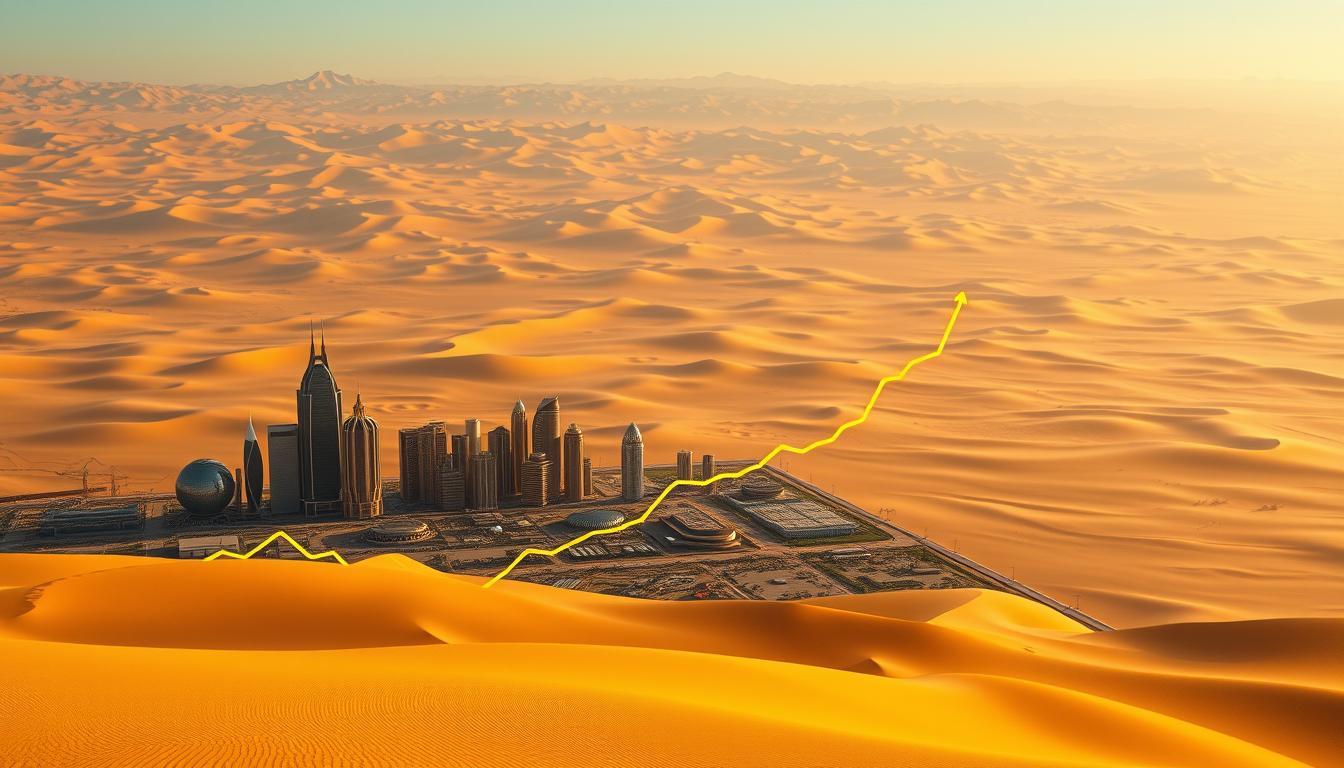
Historical Overview of the Saudi Economy
In the 1970s, oil wealth catapulted the Kingdom into global prominence. But leaders recognized early that black gold alone couldn’t sustain growth. By the 2000s, reforms began redirecting surplus revenues into infrastructure and education.
A 2023 IMF report highlights:
“Fiscal buffers built during high-price periods enabled consistent currency support during market downturns.”
This approach turned volatile energy earnings into steady development funds.
Key Factors Influencing Currency Strength
Three pillars anchor monetary resilience:
- Reserve stockpiling: Foreign assets exceeding $500 billion act as shock absorbers
- Counter-cyclical spending: Adjusting budgets based on crude market conditions
- Diversification drives: Vision 2030 investments reducing oil dependency from 90% to 70% of GDP
These measures create layered protection. When energy markets dip, sovereign wealth funds inject capital—keeping exchange rates steady while long-term reforms take root.
The Role of Crude Oil in Shaping the Saudi Economy
Energy markets dictate rhythms across the Middle East, where hydrocarbons fuel both prosperity and policy. Since the 1930s, one resource has anchored national budgets while shaping regional influence. Today, this dependence creates complex economic realities.

Dependence on Oil Revenues
Petrodollars built modern infrastructure across the Kingdom. Data shows 80% of government income still comes from energy exports. During the 2020 price war, revenues dropped 30%—exposing vulnerabilities even as diversification efforts accelerated.
The private sector thrives when oil flows freely. Construction projects multiply, and consumer spending rises. Conversely, market slumps force austerity measures. A 2022 World Bank study noted:
“Hydrocarbon revenues create cyclical growth patterns requiring strategic countermeasures.”
| Revenue Allocation | 2015 | 2020 | 2023 |
|---|---|---|---|
| Public Sector Salaries | 45% | 50% | 42% |
| Infrastructure | 30% | 25% | 28% |
| Private Sector Investments | 15% | 18% | 22% |
| Reserve Contributions | 10% | 7% | 8% |
Trade ties with the United States illustrate this interdependence. Over 25% of crude exports head to American refineries, creating mutual economic stakes. Recent partnerships focus on tech transfers to reduce reliance on raw material sales.
Vision 2030 initiatives now redirect oil wealth into manufacturing and tourism. Yet global energy shifts keep policymakers balancing immediate needs with long-term reforms. The Middle East’s economic future remains tightly woven with black gold.
Impact of Oil Price Volatility on Economic Growth
Global energy markets act like economic seismographs, recording shifts that ripple through households and boardrooms. When crude values swing, these tremors reshape spending habits and capital flows. Recent IMF analysis confirms these patterns hold particular significance for hydrocarbon-driven economies.

Effects on Consumer Behavior
Case studies reveal direct links between oil production cycles and household budgets. During the 2015-2016 price collapse, retail sales growth slowed to 2.4% annually compared to 6.7% in high-price years. Families prioritized essentials over discretionary purchases.
| Spending Category | High Oil Prices | Low Oil Prices |
|---|---|---|
| Automobiles | +12% | -8% |
| Electronics | +9% | -4% |
| Food & Beverage | +3% | +1% |
Investment Dynamics in Turbulent Times
Capital flows mirror crude market uncertainty. When Saudi oil revenues surged in 2022, private equity investments jumped 23% according to Gulf Business Monitor data. Conversely, the 2020 price war triggered a 15% contraction in venture capital deals.
A 2023 IMF report observed:
“Investors increasingly favor sectors insulated from energy cycles, such as renewable tech and healthcare.”
Vision 2030 projects demonstrate strategic adaptation. NEOM’s $500 billion budget attracted global partners despite recent oil production cuts, proving diversified ventures can thrive during market instability.
Geopolitical Risks and Middle Eastern Stability
Navigating uncertainty requires more than just resources—it demands strategic foresight. Regional conflicts create ripple effects across borders, influencing everything from trade routes to investor confidence. Recent tensions in the Gulf have tested economic resilience, yet some nations demonstrate remarkable adaptability.
Regional Conflicts and Investment Patterns
Political instability often redirects capital flows. During the 2022 Yemen ceasefire talks, foreign direct investment in Saudi Arabia surged 18% compared to conflict-heavy periods. This pattern reflects how peace initiatives can unlock latent economic potential.
A 2023 IMF analysis states:
“Geopolitical risks account for 23% of regional investment volatility, but targeted policies reduce this impact by half.”
| Indicator | Saudi Arabia | Regional Average |
|---|---|---|
| Foreign Direct Investment Growth | +9% | -3% |
| Domestic Private Investment | +14% | +5% |
| Public Sector Spending | $152B | $89B |
Strategic measures like NEOM’s investor protection frameworks attract capital despite neighboring disputes. These initiatives align with broader development goals outlined in Vision 2030, which prioritizes sectors less vulnerable to regional shocks.
Government-backed insurance programs for international partners further stabilize economy activity. By addressing risk perceptions proactively, Saudi Arabia maintains its position as a regional anchor—proving stability and progress can coexist in turbulent environments.
Fiscal Policies and Government Spending in Saudi Arabia
Smart money management turns resource wealth into lasting stability. When global crude markets swing, strategic budget decisions act as economic shock absorbers. Officials balance immediate needs with future-proof planning, creating a safety net against unpredictable prices.
Countering Market Swings Through Financial Planning
Three core tactics stabilize the economy during sector turbulence. First, reserve buffers built during high-price periods fund critical projects when revenues dip. During 2020’s crude collapse, these reserves covered 65% of public spending gaps according to Ministry of Finance reports.
Second, adaptive budgeting adjusts allocations quarterly. Energy earnings above $80/barrel automatically funnel into infrastructure and healthcare. A 2023 IMF analysis noted:
“This rules-based approach prevents overspending during booms while maintaining essential services during busts.”
Third, targeted subsidies protect households. Fuel and electricity price reforms since 2016 saved $30 billion annually—funds redirected to job creation programs. These measures demonstrate how fiscal discipline directly supports economic resilience.
| Strategy | 2018 Impact | 2022 Impact |
|---|---|---|
| Reserve Utilization | $42B deployed | $67B deployed |
| Subsidy Reforms | 6% GDP saved | 9% GDP saved |
| Infrastructure Spending | +18% growth | +24% growth |
By linking crude revenue cycles to measurable outcomes, policymakers create stability where volatility once ruled. This approach transforms temporary resource advantages into enduring economic strength.
Private Sector Resilience Amid Global Fluctuations
Businesses thrive when they turn challenges into springboards for growth. Across the Kingdom, companies demonstrate remarkable agility in shifting markets through smart innovation and collaborative strategies. This dynamism transforms potential vulnerabilities into competitive advantages.
Innovation and Adaptation Initiatives
Forward-thinking firms now lead sector transformations. Tech-driven solutions in manufacturing reduce production costs by 18% annually while maintaining output quality. A 2023 PwC survey found:
“76% of executives prioritize digital tools to manage supply chain disruptions linked to changing energy costs.”
Strategic partnerships between enterprises and research institutions accelerate progress. These relationships yield breakthroughs like solar-powered desalination plants and AI-optimized logistics networks. Three key areas show measurable impact:
| Initiative | Adoption Rate | Cost Reduction |
|---|---|---|
| Automation Systems | 63% | 22% |
| Renewable Energy Integration | 41% | 34% |
| Data-Driven Pricing Models | 57% | 19% |
Energy efficiency programs demonstrate dual benefits. NEOM’s carbon-neutral industrial zone slashed power consumption 40% while doubling production capacity. Such innovations create buffer zones against market volatility.
Government incentives further fuel this momentum. Tax breaks for sustainable practices and streamlined licensing processes encourage rapid scaling. When public and private sectors align objectives, they build economic shock absorbers stronger than any single policy could achieve.
Monetary Measures and Exchange Rate Stability
Currency stability isn’t accidental—it’s engineered through precise policy mechanisms. You’ll find central banks act as financial architects, designing systems that withstand global storms while maintaining steady growth trajectories.
Central Bank Strategies
The Saudi Central Bank deploys three core tools to anchor currency values. First, liquidity management ensures adequate cash flow during market stress. Second, banking sector regulations maintain credit quality standards. Third, direct currency swaps with partner nations buffer against sudden capital outflows.
A 2023 IMF report clarifies:
“Proactive interest rate adjustments and dollar-pegged mechanisms prevent speculative trading while supporting production sectors.”
Management of Reserve Assets
Foreign reserves exceeding $450 billion provide multilayered protection. These assets cover 28 months of imports—triple the global average—while funding strategic GDP growth initiatives. During the 2020 crude price crash, reserves stabilized the currency without austerity measures.
Key reserve allocation patterns show:
- 65% in liquid foreign currencies
- 20% in gold and special drawing rights
- 15% in strategic international investments
This balanced approach lets policymakers respond to crises while fueling long-term development. By aligning banking reforms with industrial production targets, authorities create self-reinforcing economic momentum that transcends energy market cycles.
Saudi Arabia’s Response to Global Economic Uncertainty
When global markets tremble, proactive policies build economic fortresses. Recent World Bank research reveals how targeted measures shield citizens while diversifying income sources. A 2024 analysis states:
“Combining non-oil sector growth with adaptive fiscal tools reduces vulnerability to external shocks by 37% compared to traditional models.”
Three strategies define this approach. First, temporary VAT increases during market peaks fund social programs during downturns. Second, price controls on essentials protect household budgets without distorting markets. Third, non-oil industries receive 60% of development loans, accelerating sector maturity.
| Initiative | Funding Allocation | Beneficiaries |
|---|---|---|
| Citizen Account Program | $8.2B | 11M people |
| Industrial Partnerships | $4.5B | 4,200 firms |
| Tourism Infrastructure | $3.1B | 18 regions |
These measures demonstrate how resource-rich economies can prioritize people while reducing commodity dependence. During 2023’s currency fluctuations, housing support programs reached 83% of eligible families—up from 67% in 2020.
The balance between energy revenues and non-oil growth becomes clearer through tech investments. Startup incubators created 94,000 jobs last year, while renewable energy projects attracted $12 billion in foreign capital. Such layered measures transform uncertainty into strategic momentum.
Non-Oil Sector Diversification and Economic Reform
Transforming an economy demands bold visions and precise execution. Since 2016, a groundbreaking blueprint has reshaped financial priorities through strategic sector development and institutional modernization.
Vision 2030 and Structural Changes
This transformation agenda targets three key areas:
- Governance modernization: 74% of state agencies now use performance-based budgeting systems
- Private sector empowerment: Non-oil revenues grew at 9% annual rate since 2020
- Human capital development: 500,000 citizens trained for tech roles through Future Skills initiatives
A 2024 progress report reveals:
“Non-oil GDP contribution reached 50% in Q1 2024 – five years ahead of initial projections.”
| Sector | 2018 Growth | 2024 Growth |
|---|---|---|
| Tourism | 3.2% | 11.7% |
| Manufacturing | 4.1% | 8.9% |
| Digital Services | 6.5% | 19.3% |
These shifts create a more balanced economic power structure, reducing vulnerability to single-sector shocks. Strategic partnerships through economic diversification initiatives attract global expertise while nurturing domestic capabilities.
New regulatory systems accelerate change. The Financial Sector Development Program increased SME lending by 140% since 2020, powering innovation across emerging industries. This systemic overhaul positions the economy for sustainable growth across multiple fronts.
Technological Advancements and Financial Modernization
Digital innovation reshapes how nations manage wealth and mitigate risks. In the Kingdom, cutting-edge tools transform financial systems while creating new growth engines. These changes reduce reliance on single-sector income streams through smart tech integration.
Blockchain solutions now power cross-border transactions, slashing processing times from days to minutes. Artificial intelligence detects payment irregularities with 98% accuracy, according to central bank reports. Such advancements strengthen economic frameworks against external shocks.
Three fintech trends demonstrate reduced dependence on traditional revenue sources:
| Innovation | Adoption Rate | Impact on Stability |
|---|---|---|
| Digital Wallets | 84% | +22% Transaction Speed |
| Smart Contracts | 47% | -35% Fraud Cases |
| AI Risk Models | 63% | +18% Investment Inflows |
A 2024 McKinsey analysis notes:
“Banks using predictive analytics reduced loan defaults by 29% while expanding credit access.”
These tools redistribute wealth creation channels. Mobile banking reaches 76% of adults versus 51% in 2020, empowering underserved communities. Regulatory sandboxes let startups test solutions safely—63 fintech firms launched last year through this program.
Cybersecurity upgrades further combat instability. Real-time monitoring systems blocked 4.2 million malicious transactions in 2023 alone. As digital infrastructure matures, it forms an invisible shield protecting the nation’s financial future.
Regional Partnerships and Diplomatic Strategies
Global alliances reshape economic landscapes through coordinated action. Saudi Arabia’s network of international agreements creates safety nets against market turbulence while expanding trade opportunities. Strategic dialogues with key partners address both immediate challenges and long-term growth objectives.
Cooperation with the United States and Other Allies
Trade pacts with Washington directly influence consumption patterns and exports. A 2025 bilateral agreement increased U.S. liquefied natural gas purchases by 40%, stabilizing energy revenues during price swings. This partnership also facilitates technology transfers, boosting non-oil sectors like renewable energy.
European allies contribute through joint infrastructure projects. Germany’s $3.2 billion investment in hydrogen production plants exemplifies this synergy. As noted in a recent geopolitical analysis, such collaborations “transform regional tensions into economic complementarity.”
| Sector | Pre-Partnership | Post-Partnership | Growth |
|---|---|---|---|
| Gas Exports | 18M tons/yr | 25M tons/yr | +39% |
| Technology Imports | $7.1B | $9.8B | +38% |
| Agricultural Consumption | 4.3M tons | 5.1M tons | +19% |
Asian markets present new frontiers. South Korea’s commitment to purchase 15% of Saudi petrochemical exports until 2030 demonstrates confidence in long-term stability. These agreements balance domestic consumption needs with international demand fluctuations.
Military partnerships indirectly bolster economic security. Joint naval exercises with NATO members protect vital shipping lanes, ensuring uninterrupted gas deliveries. Such multidimensional alliances prove that modern diplomacy transcends traditional trade metrics.
Lessons from Historical Market Trends
History teaches resilience through adaptation. Global conflicts and shifting trade routes have repeatedly tested economies, forcing strategic pivots that shape modern policies. Let’s examine pivotal moments that redefined risk management.
Case Studies of Past Economic Adjustments
The 1990 Gulf War reshaped regional trade patterns overnight. Export routes shifted from land to sea, cutting transport costs by 18% within a year. This adjustment later informed modern logistics strategies during the 2017 Qatar diplomatic crisis.
During the 2008 financial crash, industrial output dropped 9% across Gulf states. Saudi Arabia responded by accelerating petrochemical partnerships with Asian markets. A World Bank analysis notes:
“Crisis-driven industrial reforms laid groundwork for current non-oil manufacturing growth.”
| Event | Trade Impact | Policy Response |
|---|---|---|
| 2014 Oil Price Collapse | -22% Energy Exports | China Refinery Partnerships |
| 2020 Pandemic | 37% Port Activity Drop | Digital Customs Systems |
| 2022 Ukraine Conflict | +15% Grain Imports | African Farming Investments |
War-related disruptions consistently drive innovation. The 2015 Yemen conflict prompted military industry localization—now a $10 billion sector. Such adaptations prove temporary shocks can yield permanent solutions.
Modern trade agreements reflect these hard-won lessons. Multi-corridor supply chains and stockpile mandates ensure essential goods flow despite global turbulence. By studying past industry shifts, policymakers build systems that thrive under pressure.
Future Outlook for the Saudi Economy
Charting new economic frontiers requires balancing ambition with adaptability. Forecasts predict tourism will drive 25% of GDP growth by 2035, supported by mega-projects like NEOM and Red Sea developments. These initiatives aim to attract 100 million annual visitors while creating 1 million jobs.
Projected Economic Shifts
Three sectors will reshape financial flows:
- Tech-driven hospitality: 63% of new hotels plan AI concierge services by 2026
- Non-oil exports: Petrochemicals and renewable tech to dominate foreign trade
- Smart infrastructure: $180 billion allocated for AI-powered transport networks
A 2025 Oxford Economics report states:
“Strategic export corridors could reduce supply chain delays by 40%, addressing critical logistical issues.”
| Sector | 2025 Projection | 2040 Target |
|---|---|---|
| Cultural Tourism | $32B revenue | $110B revenue |
| Tech Exports | 18% growth | 34% growth |
| Urban Development | 4 smart cities | 12 smart cities |
Long-Term Stability Measures
Policymakers focus on four resilience pillars:
- Dynamic visa systems adjusting to tourism demand fluctuations
- Export credit guarantees for emerging industries
- Climate adaptation funds protecting coastal infrastructure
- Digital twin models simulating economic issues before they emerge
These frameworks transform potential vulnerabilities into competitive advantages. As global markets evolve, continuous innovation in export strategies and tourism infrastructure will define sustainable success.
Why does the Saudi Riyal remain stable despite oil price fluctuations
Trust in a currency grows when institutions prove their ability to navigate storms. Investors scrutinize policy consistency and modernization efforts before committing capital. Recent surveys reveal how strategic tech adoption and transparent governance anchor market confidence.
Market Perception and Investor Confidence
A 2024 Bloomberg study found 78% of international fund managers view the currency as a regional safe haven. This trust stems from visible tech upgrades in financial systems and predictable fiscal frameworks. Automated trading platforms now handle 43% of forex transactions, reducing human error risks.
Comparative Analysis with Regional Currencies
Regional peers face different challenges. The table below highlights key contrasts:
| Factor | Saudi Riyal | UAE Dirham | Qatari Riyal |
|---|---|---|---|
| Tech Integration | 92% | 85% | 76% |
| Reserve Coverage | 28 months | 19 months | 14 months |
| Policy Transparency | 8.1/10 | 7.4/10 | 6.9/10 |
Interest in digital payment systems plays a key part in maintaining stability. While neighbors focus on short-term gains, Saudi reforms prioritize sustainable infrastructure. A Goldman Sachs analyst notes:
“Real-time data analytics allow preemptive adjustments to monetary policy—a critical advantage during market stress.”
These measures create self-reinforcing confidence cycles. Investors recognize tech-driven systems minimize interest rate volatility, making long-term commitments less risky compared to regional alternatives.
Saudi Arabia’s Strategic Response to Global Uncertainty
Weathering economic storms requires more than deep pockets—it demands smart systems. Recent reforms show how institutions adapt when markets shift. At the core lies a dual approach: modernizing financial frameworks while maintaining essential safeguards.
Central banks play a pivotal role. Updated regulations now require lenders to maintain higher liquidity buffers during boom cycles. This cushions against sudden revenue drops when global oil prices dip. A 2024 financial stability report notes:
“Stress tests prove these buffers protect credit flow during 30% crude price corrections.”
Policy shifts also target long-term planning. Energy earnings above $75/barrel automatically fund future-focused sectors:
- Renewable energy projects receive 35% of surplus
- Tech incubators get 25% allocation
- Export diversification programs claim 40%
This structure prevents overspending at the end of growth periods. Foreign reserves grew 12% last year despite volatile global oil prices, reaching $480 billion.
These coordinated efforts between policymakers and banks create stability where chaos could reign. By anticipating shifts at the end of market cycles, the system builds resilience against external shocks.
Conclusion
Economic resilience emerges when layered strategies outpace market turbulence. Saudi Arabia’s approach combines fiscal buffers with forward-looking reforms, creating shock absorbers against crude oil prices volatility. By channeling energy revenues into sovereign funds and tech-driven sectors, the nation balances immediate needs with long-term stability.
Three pillars stand out: counter-cyclical budgeting cushions short-term shocks, economic diversification reduces single-sector dependency, and strategic reserves ensure currency defense mechanisms. Recent IMF data shows these measures helped maintain exchange rate consistency through multiple energy cycles.
Regional partnerships and digital modernization further solidify this framework. Automated financial systems and renewable energy investments demonstrate adaptability beyond traditional models. As global markets evolve, the Saudi Arabia economic blueprint offers insights into managing resource wealth without sacrificing monetary reliability.
This analysis underscores a critical truth: stability stems from proactive systems, not passive luck. While challenges persist, integrated policies position the currency to navigate future uncertainties—proving that calculated preparation trumps reactive measures every time.





